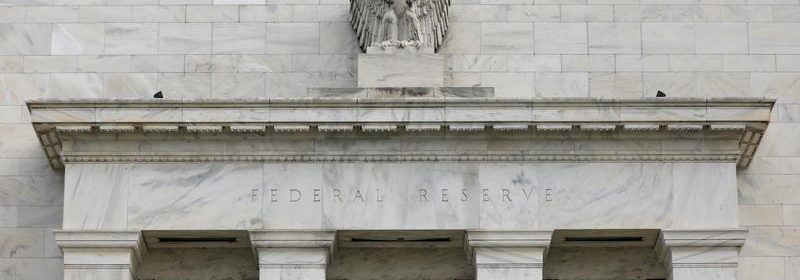Fed likely to stay the course despite U.S. economy's growing momentum

WASHINGTON (Reuters) – The U.S. economy has had a steady run of good news in recent months, with job gains accelerating as businesses reopen and forecasters projecting that 2021 will see the strongest GDP growth in decades.
But the Federal Reserve has shown no sign that there has been enough progress yet to ease the support for the economy that it put in place at the onset of the pandemic, including a promise to keep its key overnight interest rate near zero for years to come and to keep buying $120 billion in government bonds and mortgage-backed securities each month.
(GRAPHIC: Substantial further progress for the Fed? – )
The U.S. unemployment rate edged down to 6% in March, but that still left it about 2.5 percentage points higher than its level right before the pandemic; there are still about 8.5 million fewer jobs; the unemployment rate for Blacks, the labor force participation rate for women, and other factors the Fed is now watching all remain elevated. Finally, there is no sign yet that inflation is either headed for a persistent spike or durably set at the Fed’s flexible 2% target.
(GRAPHIC: Oxford Economics Recovery Index – )
The U.S. central bank’s policy-setting Federal Open Market Committee (FOMC) will end its latest two-day meeting on Wednesday. Its policy statement, due to be released at 2 p.m. EDT (1800 GMT), is expected to largely follow the mold established in December, when the Fed said it would not change monetary policy until there had been “substantial further progress” in meeting its maximum employment and 2% inflation goals.
Economic data since Fed policymakers last met in March “has been generally strong,” JP Morgan economist Michael Feroli wrote in an advance analysis of this week’s meeting. But with tens of thousands of new coronavirus infections each day in the United States and millions still out of work because of the pandemic, “we look for no changes in the statement’s forward guidance regarding either overnight interest rates or asset purchases,” Feroli said.
Fed Chair Jerome Powell, who will hold a news briefing about half an hour after the release of the statement, “will continue to be patient in his assessment of when substantial further progress on employment and inflation will be achieved,” Feroli said.
There’s little argument that economic conditions are getting better almost across the board. The nearly 1 million jobs added in March were concentrated in the leisure and hospitality sector, which was devastated at the start of the pandemic and is seen as the one most likely to rehire large numbers of the least-skilled and lower-paid workers who are at the greatest risk of a long-term economic shock.
(GRAPHIC: Labor market index – )
Many economists expect strong job gains in coming months, with economists from Jefferies, at the high end among forecasters, penciling in 2 million new jobs being added this month. The U.S. Labor Department is due to release its April nonfarm payrolls report on May 7.
Ongoing COVID-19 vaccinations have raised hopes that the virus will be effectively curbed in the United States sometime this summer, and a recent jump in daily infections now appears to be reversing course. About 54% of American adults had received at least one dose of a COVID-19 vaccine as of Monday.
At some point all the developments on the economic and health fronts will add up to enough progress for the Fed to begin planning its exit from the crisis, and flagging those plans in its statements and in policymakers’ public remarks.
The first step will be to signal its plans to slowly reduce, or taper, the pace of the monthly bond purchases. Analysts say the Fed could open that conversation as soon as June, and point to actual bond purchase reductions beginning later in the year.
“By the time of the June meeting, well over half of all Americans should be partially vaccinated, and the level of employment could be a few million greater than it is now, allowing the FOMC to discuss some tangibly improving outcomes,” Feroli wrote. “For now, however, we think the message from the Committee will be little changed from the one delivered six weeks ago.”
Source: Read Full Article
